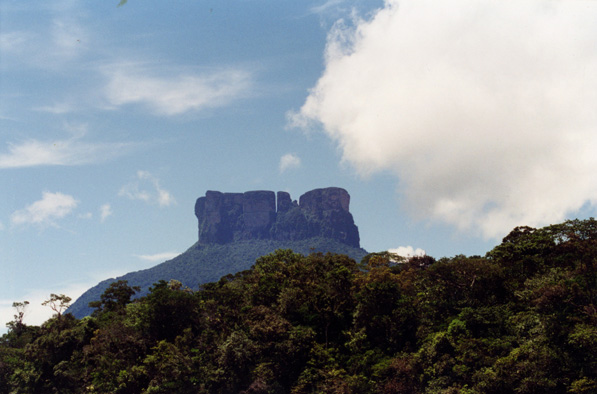The IUCN has unveiled the first iteration of its new Red List of Ecosystems, a ranking of habitats worldwide.
The Red List of Ecosystems is modeled after the IUCN’s Red List of Threatened Species, which now serves as the global standard for assessing the extinction risk of plants and animals. Like the species ranking system, the ecosystem list will identify whether an ecosystem is vulnerable, endangered, or critically endangered. The list applies across terrestrial, freshwater and marine ecosystems, potentially helping governments prioritize conservation efforts, according to David Keith, the lead author of the PLoS ONE study that lays out the criteria for initiative.
“By knowing which ecosystems are tracking well and which ones are in trouble, governments, industries and local communities will be well-positioned to make smart investment decisions for sustainable environmental management,” Keith said via a press release.

Venezuela’s unusual tepui ecosystem was assessed in the study
The criteria for the list include four “symptoms” of ecosystem risk: “A) rates of decline in ecosystem distribution; B) restricted distributions with continuing declines or threats; C) rates of environmental (abiotic) degradation; and D) rates of disruption to biotic processes.” A fifth criterion is the risk of ecosystem collapse.
The paper included a collection of 20 “case study” ecosystems. The most endangered of these is the Aral Sea in Central Asia, which has suffered from severe shrinkage and salinization, leading to species extinction and invasion by non-native species.
Sample ecosystems
| Aral Sea | Uzbekistan and Kazakhstan | freshwater | critically endangered | |||
| Raised bogs | Germany | freshwater | critically endangered | |||
| Gonakier forests of the Senegal River floodplain | Senegal | freshwater | critically endangered | |||
| Cape Sand Flats Fynbos | South Africa | terrestrial | critically endangered | |||
| Coorong lagoons | Australia | freshwater/marine | critically endangered | |||
| Karst rising springs | Southern Australia | freshwater | critically endangered | |||
| Coastal sandstone upland swamps | Australia | freshwater | endangered/critically endangered | |||
| Swamps, marshes and lakes in the Murray-Darling Basin | Australia | freshwater | endangered/critically endangered | |||
| Giant kelp forests | Alaska | marine | endangered/critically endangered | |||
| Caribbean coral reefs | Caribbean | marine | endangered/critically endangered | |||
| Seagrass meadows | Southern Australia | marine | endangered-critically endangered | |||
| German tamarisk pioneer vegetation | Europe | freshwater | endangered | |||
| Coolibah-Black Box woodland | Australia | freshwater/terrestrial | endangered | |||
| Tapia forest | Madagascar | terrestrial | endangered | |||
| Semi-evergreen vine thicket | Australia | terrestrial | endangered | |||
| Great Lakes Alvars | United States and Canada | terrestrial | vulnerable/endangered | |||
| Reed beds | Europe | freshwater | vulnerable | |||
| Floodplain ecosystem of river red gum and black box | Southeastern Australia | freshwater | vulnerable | |||
| Tepui shrubland | Venezuela | terrestrial | least concern | |||
| Granite gravel fields and sand plains | New Zealand | terrestrial | least concern |
Citation: Keith DA, Rodríguez JP, Rodríguez-Clark KM, Nicholson E, Aapala K, et al. (2013) Scientific Foundations for an IUCN Red List of Ecosystems. PLoS ONE 8(5): e62111. doi:10.1371/journal.pone.0062111
Related articles